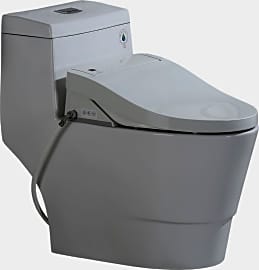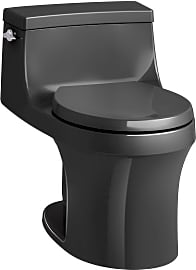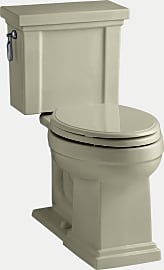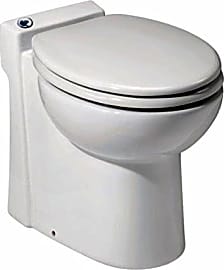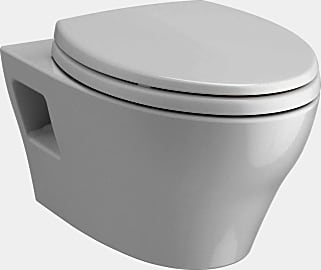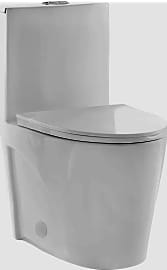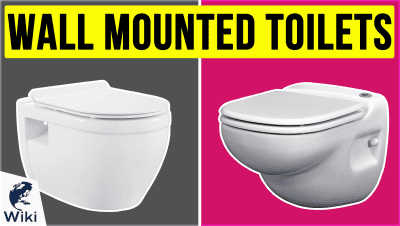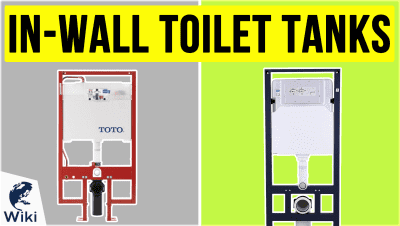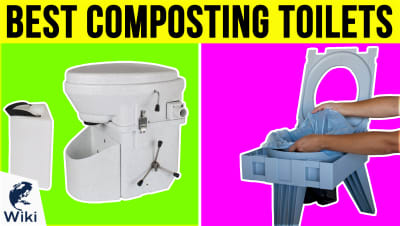The 10 Best Toilets

This wiki has been updated 41 times since it was first published in March of 2015. We're not going to make a lot of number one or number two jokes here, but when it comes to doing your business, we think that both such calls of nature will be well served by one of these toilets. Many of our choices offer environmentally-conscious, water-efficient designs with comfortable seats, and come in various styles to complement bathrooms of any size and decor. When users buy our independently chosen editorial picks, we may earn commissions to help fund the Wiki.
Editor's Notes
April 23, 2021:
While aesthetics is the primary consideration when choosing a new toilet, their overall size, the various mounting options, seat height, and how they connect to the waste and water supplies are also important. Close coupled toilets are the most common type, and is composed of the bowl and water cistern. Wall-mounted toilets feature a concealed water tank. They are a versatile choice as they take up less space and can be installed at whatever height suits you best. A back-to-wall toilet is similar to a wall-mounted one in that it also uses a concealed tank, however, the bowl is floor mounted so cannot be adjusted in height.
Those looking for a toilet for a small bathroom or a washroom will likely prefer a compact option such as the Kohler San Souci, which has a streamlined design and sits at just 28 inches from the wall. It is available in white, biscuit, or an eye-catching matte black. The wall-mounted Toto EP is another space-saving option with a simplistic design, however, it is more tricky to install as the water tank needs to be built into the wall. We replaced the Niagara Stealth with the Swiss Madison St.Tropez as a good quality budget option that features a dual flush of either 0.8 or 1.28 liters and comes with a soft closing seat. The Ove Decors Lena smart was selected to replace the Ove Smart, and now includes a remote control for selecting its various features, although, similar to the other automated options on the list it will require a power supply.
February 27, 2020:
While most of our previous selections for this category made it through this round of updates unscathed, we did decide to flush the American Standard Cadet 3 and Eago TB309 down the drain due to a relative lack of noteworthy features. In their places, we implemented the Woodbridge B-0960S – a modern-looking model with all the bells and whistles, and the Nature's Head Spider-2 – a composting toilet that presents an interesting option to environmentally conscious users and RV, boat and remote cottage owners.
A few considerations for this category:
Efficiency: Put simply, the more water your toilet uses, the more it costs you. So, be mindful of each model’s flush rating. The Niagara Stealth is quite impressive in this respect, using only .8 gallons of water per flush – which is half as much as some low-end models. Also, keep an eye out for toilets like the Toto Aquia that have dual-flush systems that allow you to choose between a small flush or a large flush – a feature that can save you quite a lot of money over time, should you choose to use it.
Comfort: This is a matter of personal preference that will largely be dependent on your individual anatomy, but regardless of what shape and size you are, there’s two simple considerations you need to keep top of mind while researching this category:
Height: This is something that many of us don’t notice every time we sit down to do our business, but for tall users and users with mobility issues, a higher toilet can help mitigate daily discomfort and irritation. For users like these, there’s taller models like the Kohler Tresham, and wall-mountable models like the Saniflo SaniCompact – which can be installed at any height.
Bowl Shape: While round bowls like Kohler San Souci and Saniflo SaniCompact are frequently favored to save space in smaller bathrooms, many users will appreciate the extra support offered by elongated models like the Niagara Stealth and Woodbridge Luxury.
Bells and Whistles: While traditional toilets are quite simple in their design, if you’re not phased by massively inflated prices, some of our top-end selections include a host of luxurious features. Both the Woodbridge Luxury and Woodbridge B-0960S, as well as the Toto Neorest 700H, boast built-in bidets, air dryers, automatic flushes and heated seats.
Special Honors
Armitage Shanks Designed to perform and engineered to exacting standards, all Armitage Shanks ceramic products are guaranteed for a lifetime. They have a full range of toilets including low and high level, back to wall, close coupled, and wall-mounted, and if desired, they can be purchased as an entire suite. armitageshanks-mena.com
Vintage Tub & Bath For more than 25 years, Vintage Tub & Bath has been crafting beautiful kitchen and bathroom products for your home. Their comprehensive selection of toilets are sourced from around the world and go through rigorous testing to ensure customers receive only high-quality products. vintagetub.com
The Birth Of The Toilet
Partly for this reason, the easy-to-use flush toilet became the standard by the 19th century, and remains so to this day.
The ancient civilization of Mohenjo Daro is credited with the most advanced plumbing of the early Bronze Age. In 2800 BCE, the city not only had crude western-style toilets, but also boasted a network of sewers and cesspools used to eliminate human waste matter.
Other ancient toilets have been in discovered in Scotland, Crete, Egypt, and Persia. All of these advanced toilet systems existed over three thousand years ago, and closely resemble the throne toilets still in use today. The Roman toilets were often a part of public bath houses, and were regularly flushed with water to push the waste into the sewer systems. The people of India and Pakistan also had water cleaning toilets long before the invention of flush toilets.
The use of a chamber pot was a common practice for centuries before the flush toilet. The chamber pot was a large ceramic, china, or metal pot used to collect human waste. In the 16th century, the chamber pot served as a night toilet, and was cleaned in the morning by pouring the waste into the gutters. These gutters ran into cesspools from which solid matter was taken to create fertilizer.
By the 19th century, concern for public hygiene grew and the practice was officially brought to an end. Forms of the chamber pot are still in use today, though their use is limited to the bedpans found in hospitals and invalid homes.
The last step before the modern flush toilet was the dry toilet. These resemble modern composting toilets, and were a little more involved than the flush variety. Partly for this reason, the easy-to-use flush toilet became the standard by the 19th century, and remains so to this day.
Benefits Of Modern Toilets
The first flushing toilets were engineering marvels. As Alexander Cumming invented the S bend in 1775, which are still in use to this day, one might assume that toilets have not changed much in the last few centuries. In reality, both stylistic and functional changes are made to toilets on a consistent basis. Modern toilets benefit from both centuries of evolved knowledge and the use of advanced modern technologies.
Other models may boast a dual flush feature, allowing users to choose if they need a small, efficient, or a full-sized flush.
These modern technologies create many benefits for users that were unrealized throughout history. Stylistic choices like comfortable seats and slam-resistant lids exist in some models; others boast a more environmentally-friendly appeal by wasting less water with every flush.
Old flush toilets use as much as four gallons of water for every flush, but the current Federal Plumbing standards specify the limit to be at 1.6 gallons for the sake of conserving water. Some modern models take it a step further with high-efficiency toilets using as little as 0.8 gallons per flush. Other models may boast a dual flush feature, allowing users to choose if they need a small, efficient, or a full-sized flush.
Additional features seen in toilets include quiet flushing, advanced flushing mechanisms, as well as various coatings used to deter mold and bacteria while keeping the toilet bowl clean.
The Healthiest Way To Use A Toilet
Evacuating the bowels includes three distinct steps. First, the digestive system stores the fecal matter in the rectal cavity. When the cavity is ready to be evacuated, a relaxation of the anal canal is experienced. This is the feeling a person experiences when they need to defecate. The third component is the evacuation of the bowels using abdominal force and strain. While the first two steps are considered bodily functions which require no effort, the actual evacuation of the bowels is often left to human will to accomplish.
When the cavity is ready to be evacuated, a relaxation of the anal canal is experienced.
This straining to accomplish a normal bodily function has puzzled researchers, and may be the cause of numerous disorders in the body. Researchers in a recent study note that in areas of the world where humans squat to evacuate their bowels, there was less incidence of gastrointestinal disorders such as constipation, hemorrhoids, and diverticulosis. This may be linked to the way toilets are used.
The standard use of a toilet requires that one plant both feet firmly on the floor, with the knees bent and the body sitting upright. When viewed under an X-ray, this position actually appears to close off the rectal passageways, which causes straining when evacuating the bowels. Over time, this consistent strain causes unnecessary pressure to build up in the colon and rectum, which may contribute to these chronic ailments.
In so-called less developed cultures, many people still squat to evacuate their bowels. When viewed under an X-ray, this squat produces a 35-degree angle between the body and the legs, and actually relieves pressure placed on the colon and rectum. This angle keeps the digestive system in line, reduces transit time of fecal matter, and decreases abdominal strain during the act of evacuation. The study notes that the greater the hip angle is, the easier the fecal matter comes out of the rectum.
While there are many products on the market that claim to be the only way to accomplish this task; the proper hip angle for toilet use can be achieved by placing books or bricks on either side of the toilet, to elevate the feet during defecation.



